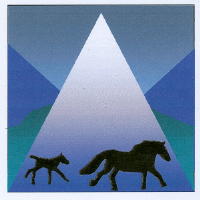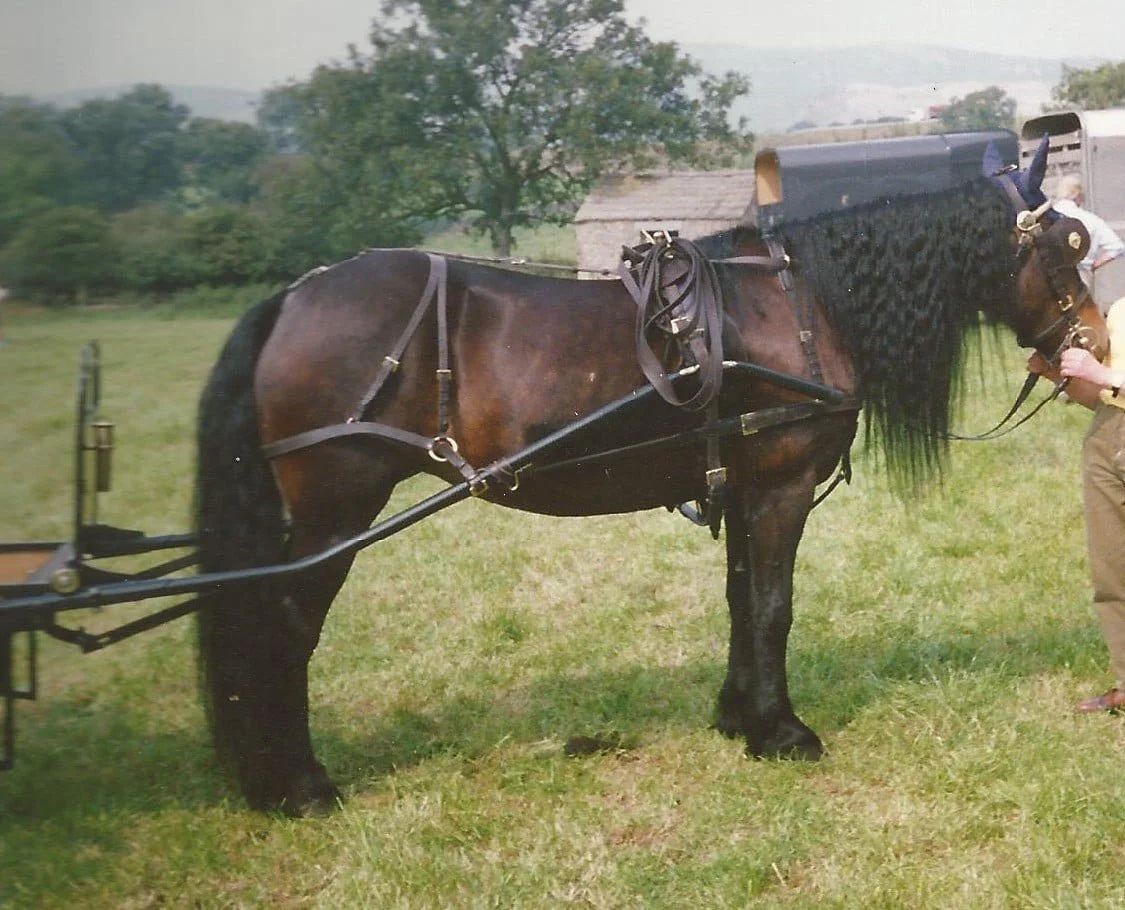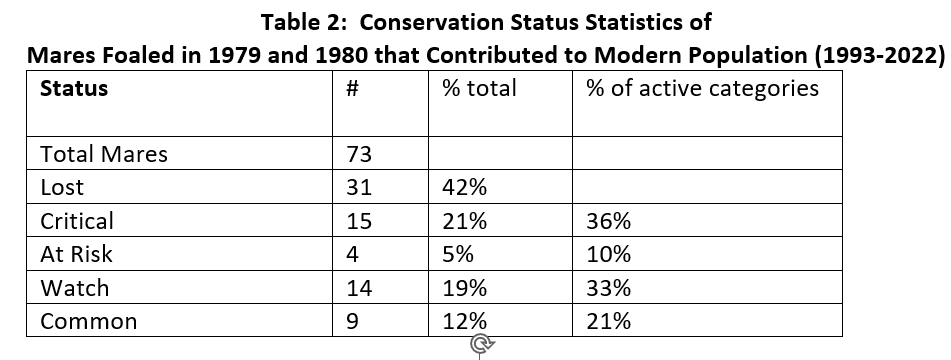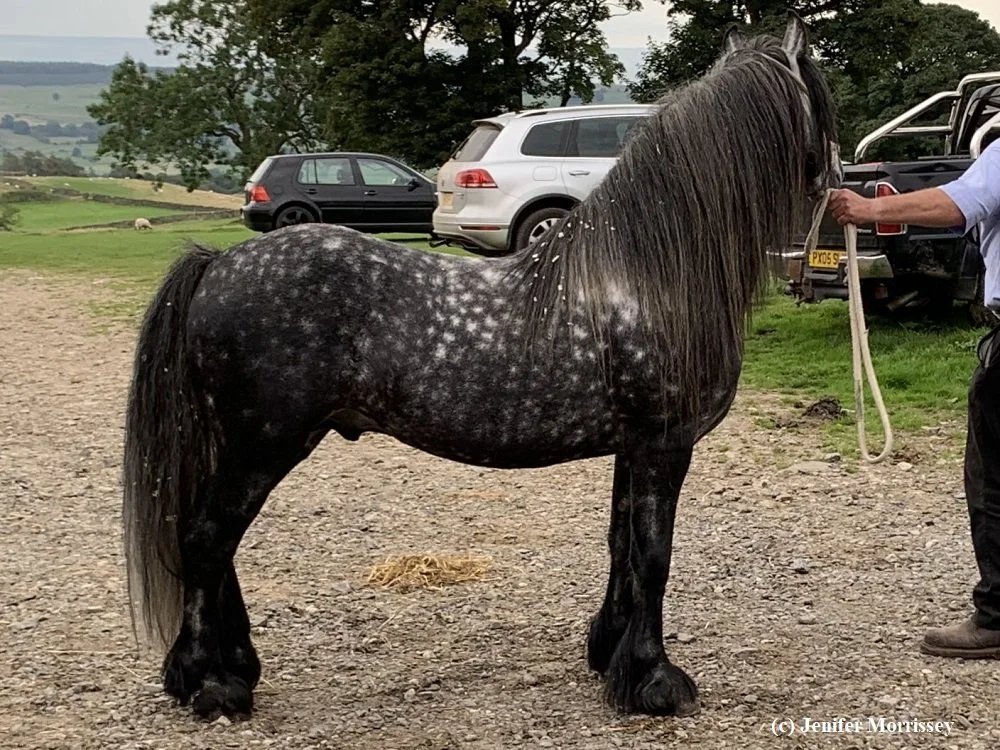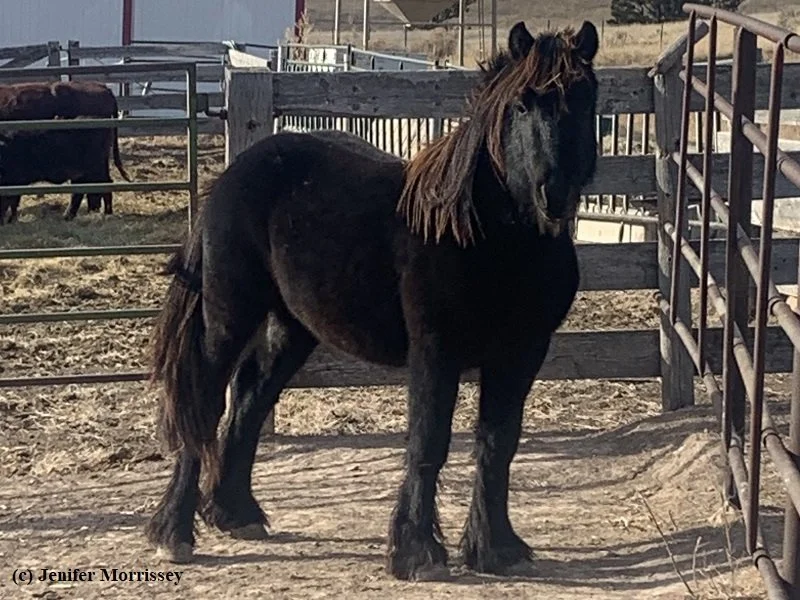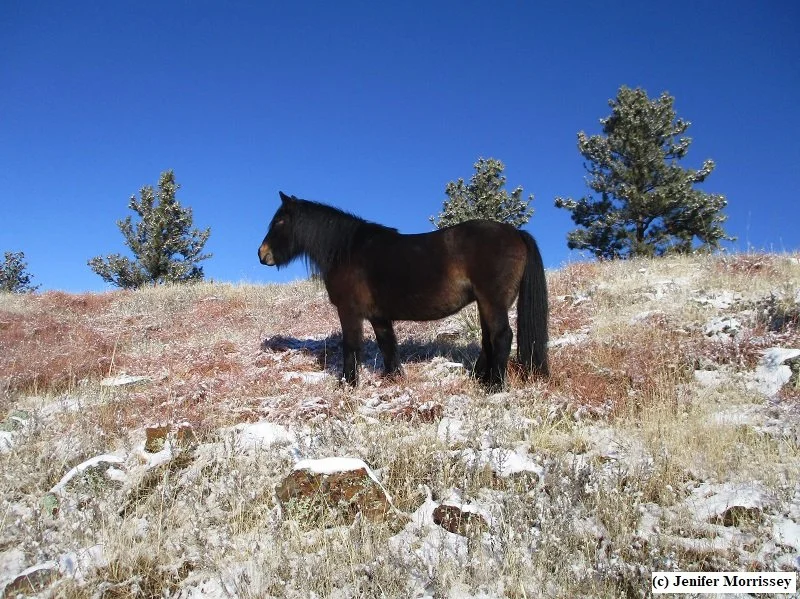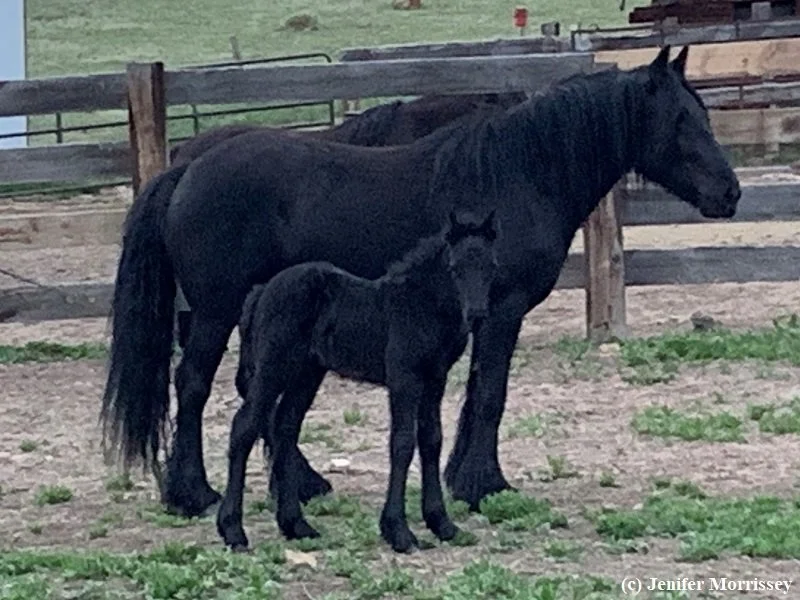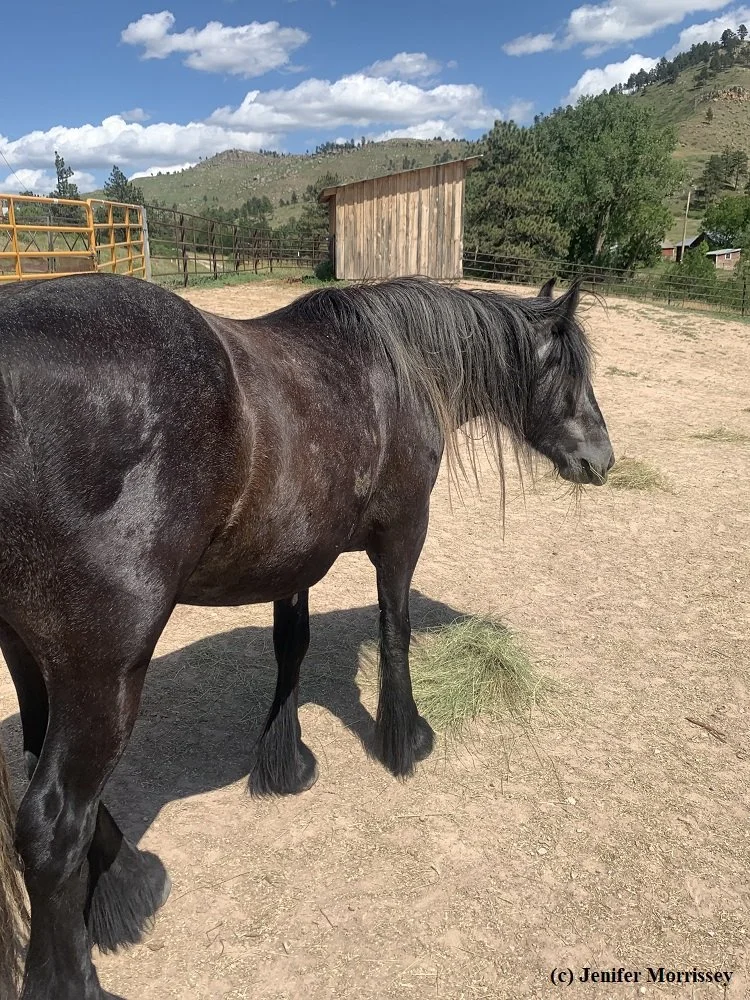Incomplete Pedigrees
As described earlier, the aim of the Inspection Scheme was to increase the number of registered ponies by bringing unregistered ponies into the breeding population after being inspected. In most cases, the ancestors of those unregistered ponies were unknown. The consequence of that lack of information means that our ponies’ pedigrees, if we go back far enough, are not complete. For instance, my first Fell Pony mare, Sleddale Rose Beauty, had three inspected ancestors five generations back. Therefore, her pedigree was complete only to five generations. Before that, some of her ancestors were unknown.
A research paper on effective population size calculated the average equine generation to be 9.6 years. (5) This number closely corresponds with what I learned about the average length of the Fell Pony generation when populating my database back in time. (6) Let’s take Beauty as an example of how incomplete pedigrees is related to the purported bottleneck. Beauty was born in 1987. Since her pedigree is complete only to five generations, then her pedigree is incomplete before about 1939 (= 1987 - 5 x 9.6). That date is at the end of the decade when the chart above indicates we had a bottleneck. Some of Beauty’s ancestors, therefore, were unknown during the supposed bottleneck. They obviously existed and contributed diversity to Beauty’s genetics but they didn’t contribute diversity to her pedigree.
In another example, the pedigree for my current stallion Globetrotter Moth is only complete to four generations. He was foaled in 2022, so his pedigree is complete on one branch to only 1984 (= 2022 – 4 x 9.6). In another branch it is complete only to 1961. Therefore, many of Moth’s ancestors were unknown during the 1930s and 1940s when we supposedly had a bottleneck. It turns out that more than 95% of pedigrees of modern day Fell Ponies were not complete during the 1930s and 1940s. (7) If most of our modern ponies did not have complete pedigrees during the supposed bottleneck, then we can’t say for certain who all their ancestors were during the 1930s and 1940s. If we can’t say who all their ancestors were, we can’t say with any authority how healthy their genetic diversity was based just on pedigrees. We are fortunate, then, that Winton, et al, gave us the extraordinarily surprising information that, especially in our mares, we have healthy genetic diversity.
Conclusion
It is very important to recognize that Fell Pony pedigrees are not useful in determining the health of the genetic diversity of our breed. Our pedigrees are inaccurate and they are incomplete, so no conclusions based on them can be drawn about genetic diversity. On the other hand, we are indeed fortunate that some research has been done that suggests the genetic health of our breed, at least in the females, is relatively healthy. However, that is not to say that our breed is out of the woods from a genetic perspective. As I laid out in the last article in this series about effective population size (click here if you’d like to read it), the size of our worldwide breeding population based on pedigrees is still below the threshold that scientists consider healthy.
Where, as Fell Pony breeders, should we be putting our energy to improve our breed’s future genetically? I had one new prospective breeder tell me a few days ago that they wished to avoid using FIS carriers. I explained to them that that is not the wisest choice for our breed. Winton, et al, said as much: “The Fell ponies face the challenge of reducing the proportion of FIS carriers in the population, but great care must be taken to ensure unique ancestral maternal haplotypes are not lost in the process.” We must not eliminate carriers from our breeding population without extremely careful thought.
Here are some things that we can do as a worldwide breeder community; there are likely even more to be found:
Identify rare lines in the worldwide Fell Pony population that are worthy of conservation and use them in a conservation breeding program that ensures their continued presence in our breed.
Ponder the meaning of having maternal diversity and where to put efforts regarding conserving the different genders.
In Holland and North America where populations seem to be diverging from the UK population, look at how diverse our female lines are relative to the worldwide population and make adjustments accordingly.
Support additional DNA research when possible to give us additional information about our breed’s genetic health.
Regarding #1, I have identified overall rare lines in our breed and posted my findings on the internet (click here to read more). It is interesting to note that the majority of the ponies are female, as Winton et al suggested. I suspect there is more to learn about maternal lines, so I have put #2 on my to-do list!
